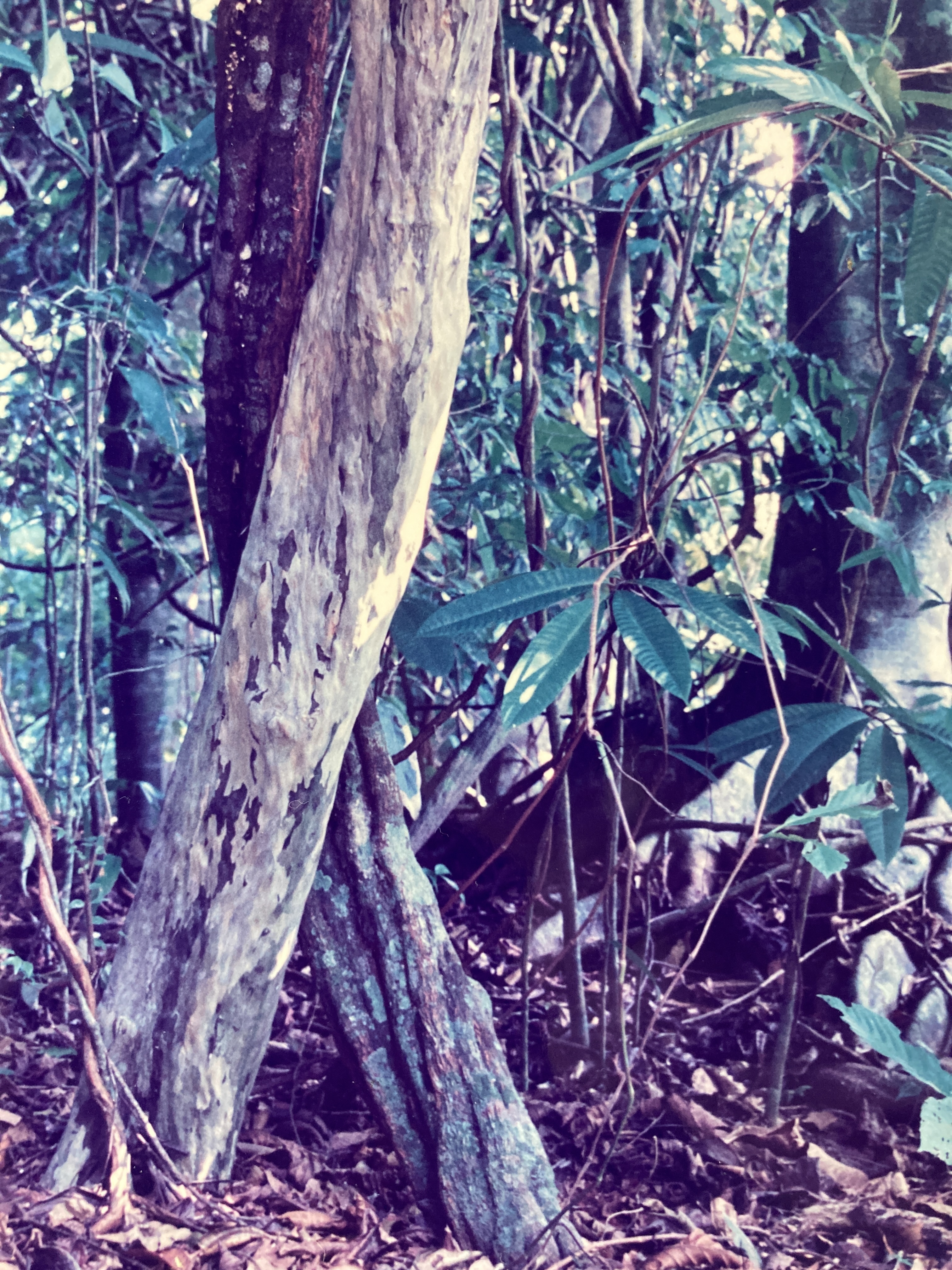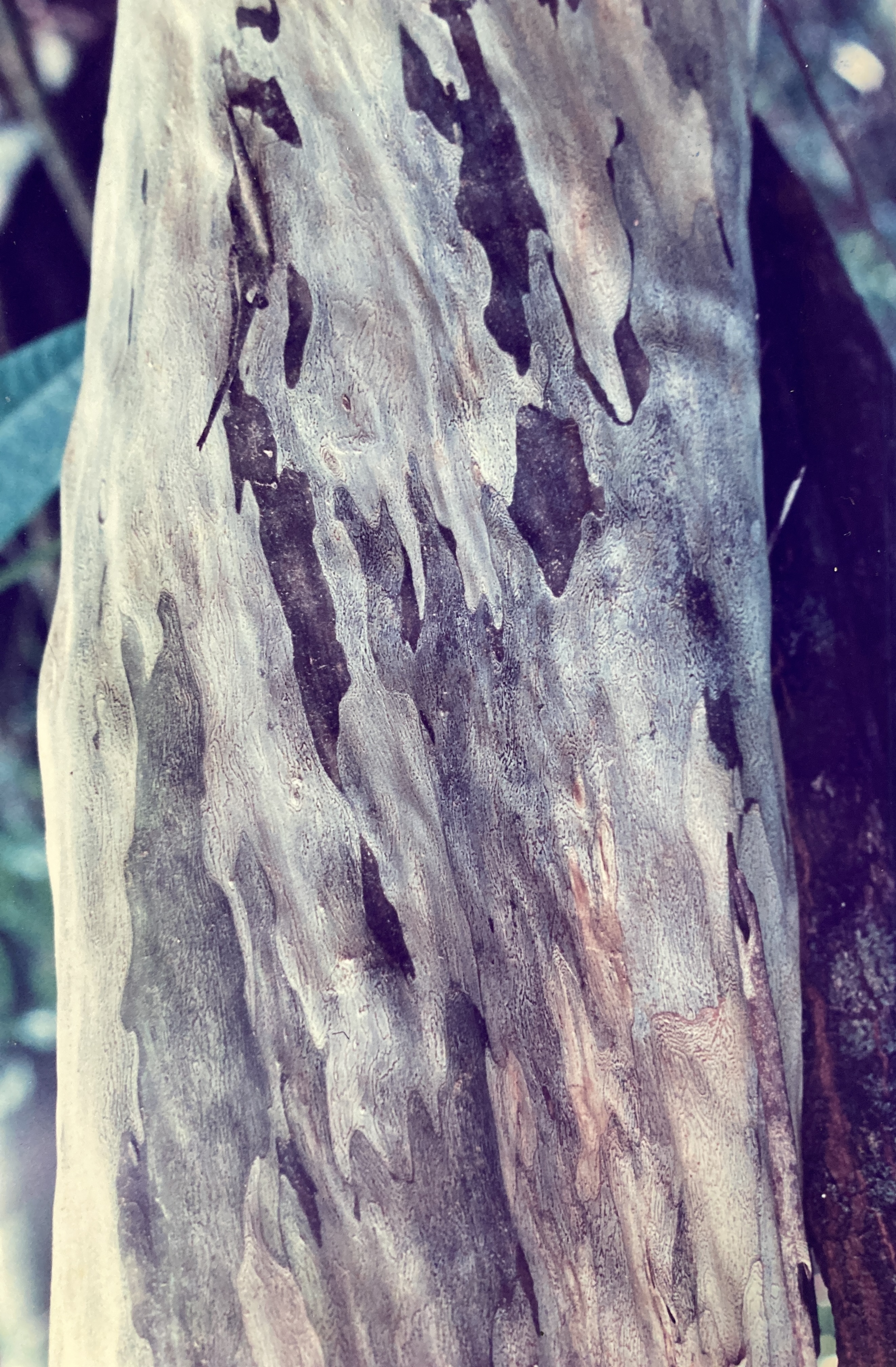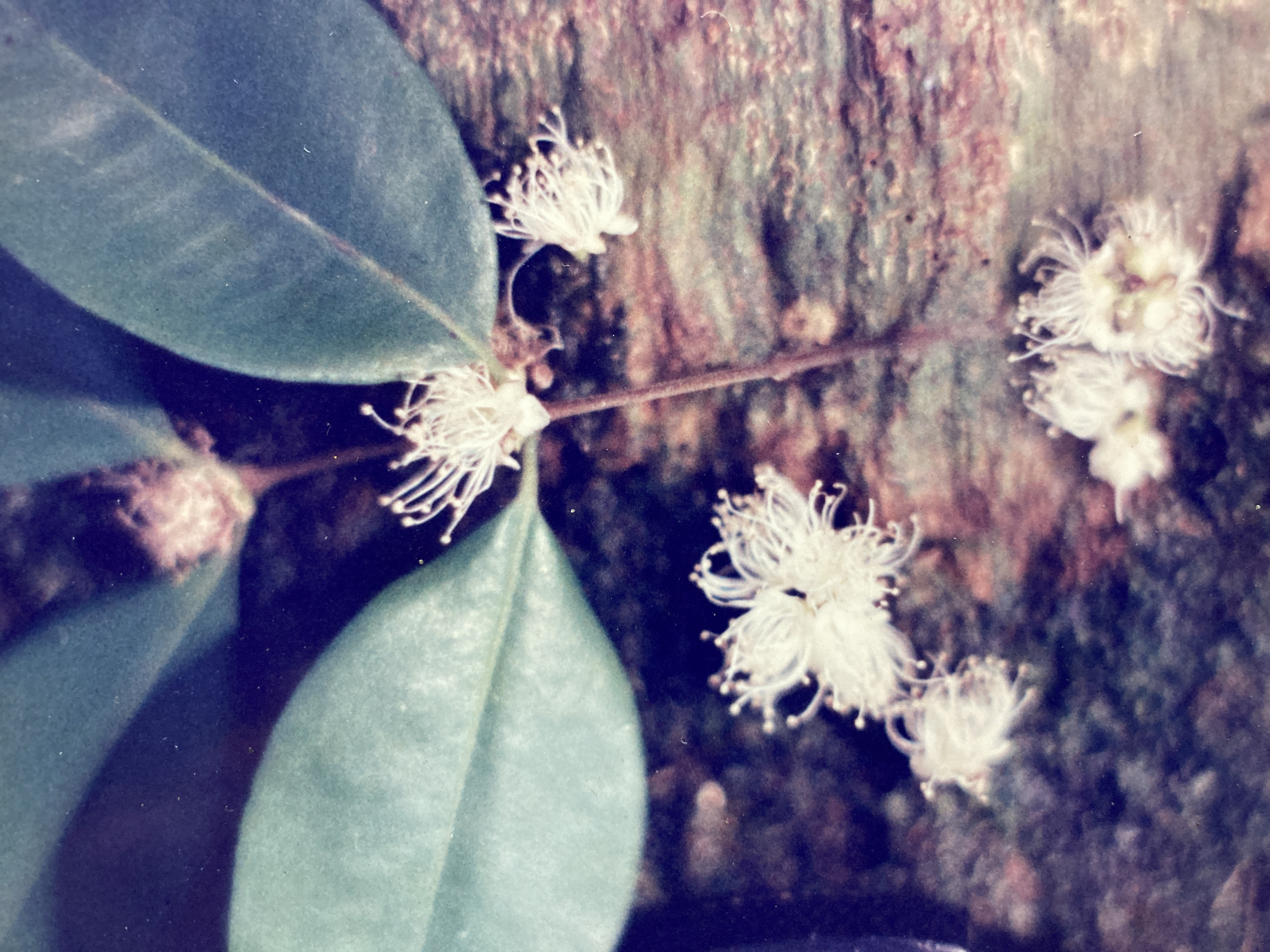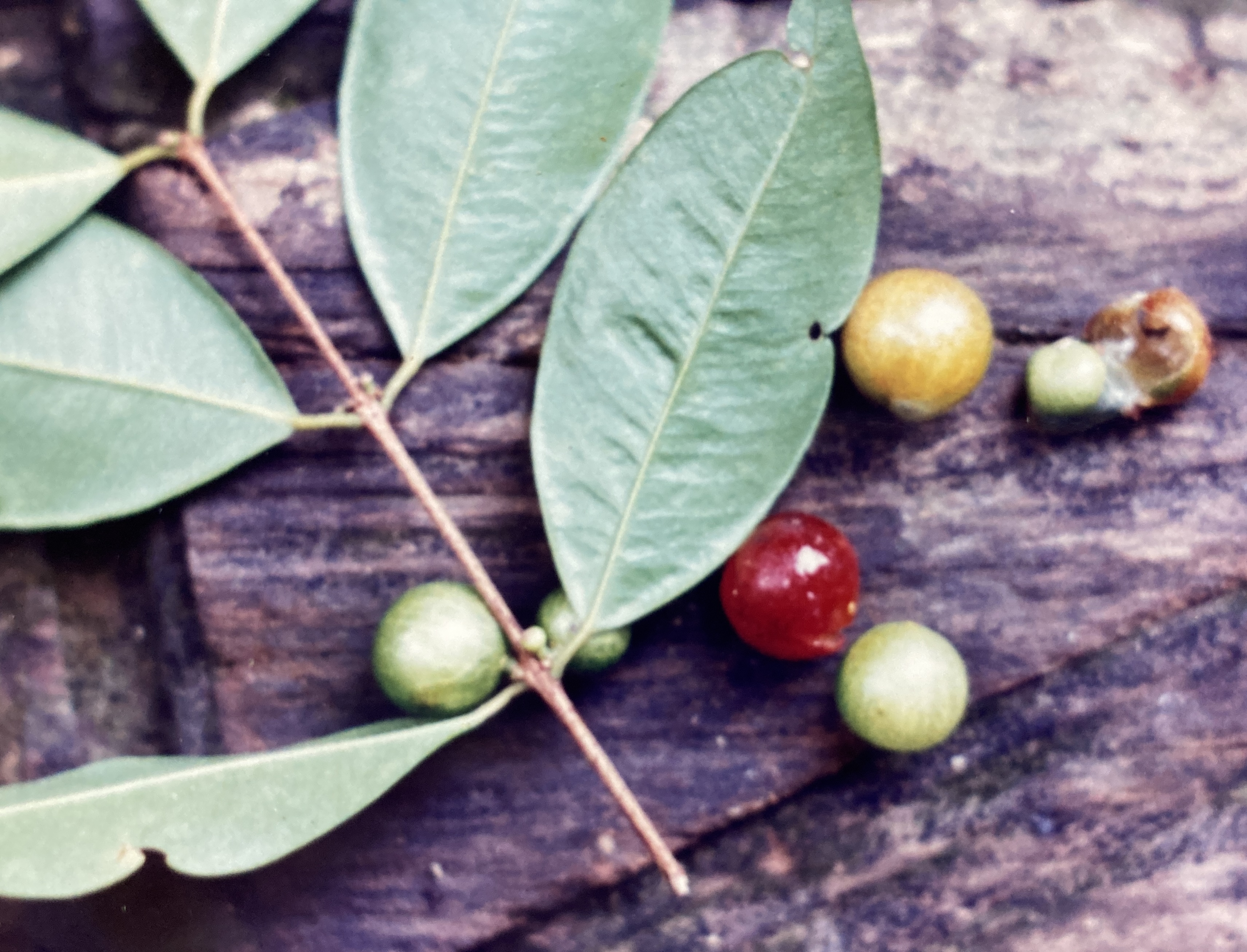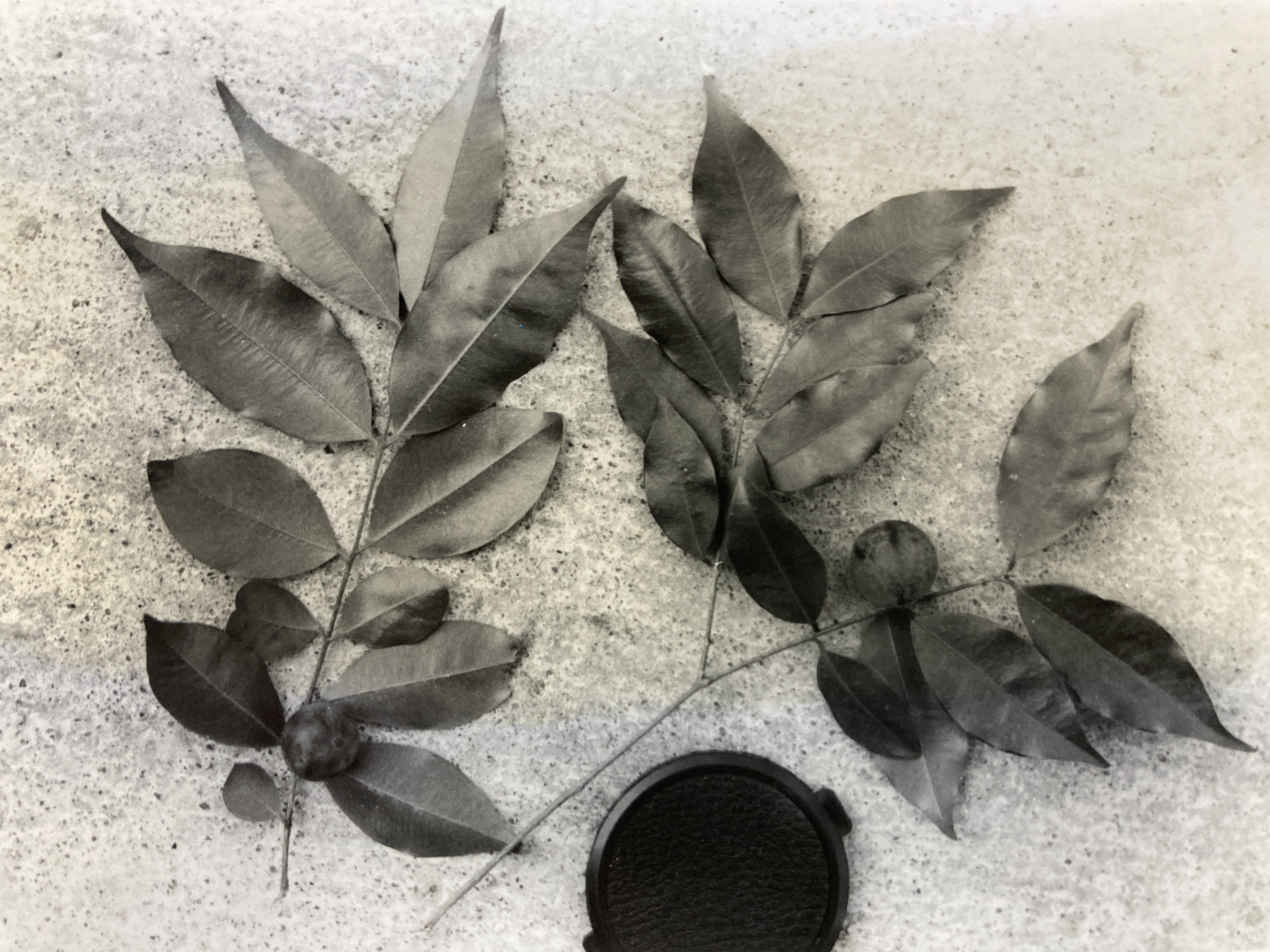Myrciaria floribunda (Willd.) O. Berg
Myrtaceae
CASIQUE
Occasional or uncommon evergreen, understory tree (5-10 m) inhabiting the perpetual twilight characteristic of the lower reaches of the primary, tropical jungle. Preferring well drained soils, Casique frequents the hills and ridge tops typical of the broken topography present in Manuel Antonio’s forested interior. Myrciaria is a compact tree with an aesthetic, dark green and finely textured crown. Still, the mottled, unlikely bark, that sculpts the bole in curved patterns of green and brown, must be this species’ most dramatic and memorable feature.
Description: Casique boles, rarely exceeding 30 cm in diameter and lacking buttress roots, are usually straight – though not cylindrical – in form, presenting a rather undulating surface. The trunk is conspicuously clad in thin, smooth, pealing bark that is shed in irregularly shaped, scalloped sheets. When freshly exposed, the cortex is almost yellow in color, but with time, it grades from pale through dark green and finally to bronze – at which point it exfoliates. From a distance, the confluence of these unusual bark colors make the bole appear pale and haphazardly mottled with pastel tones. Many thin branches, supporting a dense covering of fine leaves, emerge from the trunk along its upper half, and the crown they produce is rounded, compact, dark green, and dense. The leaves themselves are simple, opposite and relatively small (5 cm by 2.5 cm), bearing short (2 mm) petioles and well-developed drip tips. A layer of fine pubescence coats Casique twigs, petioles and mid-ribs, but otherwise the elliptical, entire blades are smooth. New foliage (about 40%) is added to the pre-existing leaf cover in April or May.
Casique flowers are extremely minute (4 mm in diameter), ephemeral, and delicate. They appear singly – or in groups of up to four – and are closely tied to leaf axils. Though a head made of multiple (at least 20), white, and relatively long stamens constitute the blossom’s most prominent feature, four tiny white petals, four green sepals, and a central pistil are also present. Casique flowering periods are short lived but precisely timed events. In five years of observations, the local population of trees was fertile annually for two week periods that consistently fell between the third week of July and the first week of August.
Fruits are small (1 cm), spherical berries that mature as they change color from green through orange and finally to bright red. Born singly and in leaf axils, they are sessile or nearly so and can be seen from the ground, thinly distributed amidst the foliage of the higher branches. Each berry has a firm rind that surrounds a softer layer of white pulp and two rounded green seeds (4 mm in diameter). Harvests are annual and occur in November and December.
Similar Species: All Myrtaceae species present in Manuel Antonio National Park (MANP), and many of the Rubiaceaes as well, have similarly-shaped, oppositely-arranged leaves. Casique can easily be distinguished from any one of them thanks to its peculiar bark pattern – completely unique among the arboreal flora found in not only in Manuel Antonio, but in any of Costa Rica’s Pacific lowland forests.
Natural History: Small insects are probably the principle pollinators of Casique flowers, while birds – light enough to be supported by this tree’s thin twigs and branches – are the principle consumers of its fruits.
Uses: The literature suggests that Myrciaria floribunda fruits are edible.
Distribution: In Costa Rica, Myrciaria is known from Manuel Antonio and Punta Leona, though there are reports of its presence in San Ramon as well. It ranges from Mexico and the Antilles to Peru and Brazil.

